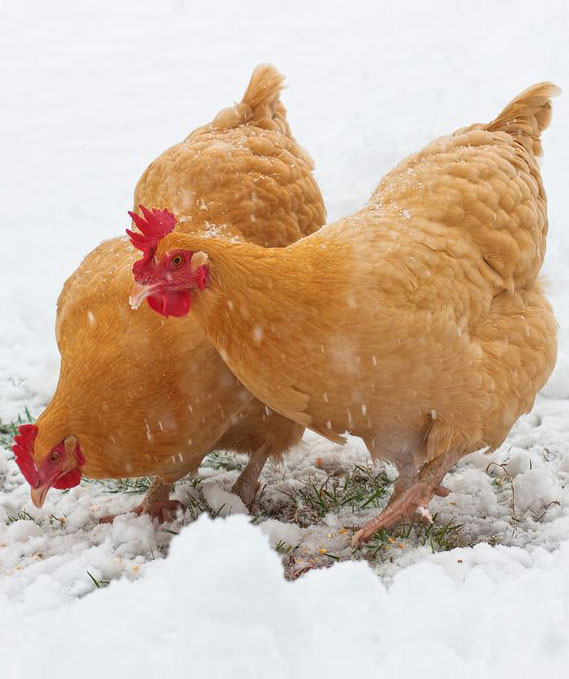
Chickens have a naturally high body temperature, averaging around 106°F, which allows them to remain active despite cold weather. As the temperature drops, a chicken’s metabolism speeds up to keep the bird warm.
At the same time, the flow of blood to a chicken’s legs decreases to minimize the escape of body heat from bare legs. Overlapping scales on the legs and feet also help conserve heat to some extent, but when a chicken feels really cold, it will sit on its legs and feet, or tuck them under its breast, to keep them warm. Heat also escapes from the beak and comb, so a cold chicken will warm its head by tucking it under a wing.
Some breeds have developed adaptations to help them cope better in a cold climate. Heat conserving adaptations include:
- Especially dense body feathers, like Orpingtons
- Leg feathering, like Cochins
- Beards and muffs, like Ameraucanas
- Puffy crests on top of the head, like Houdans
- Minimal combs and wattles, like Sumatras
Regardless of the breed, when chickens are cold they ruffle up their feathers, creating an air space near their skin that traps body heat. To conserve collective body heat, cold chickens tend to congregate and huddle together.
When huddling and feather ruffling aren’t enough, cold chickens shiver. Shivering increases the metabolic rate, generating more body heat, but also requires more calories. Chickens therefore eat more in winter and will suffer if the feeder goes empty. The body temperature of a chicken that doesn’t eat for just one day drops about 2.5°F, and a chicken that doesn’t eat for a second day drops another degree or so. A chicken that goes hungry in cold weather won’t last long.
Developing fat reserves is therefore another cold-climate adaption, since a chicken with a little body fat suffers less in cold weather than a thin chicken. The cold-hardy American breeds are notorious for easily accumulating body fat, to the detriment of egg production in older hens.
Many breeds, however, can benefit from a little scratch grain on a winter evening, before they go to roost. The extra calories will help them stay warm overnight.
And that’s today’s news from the Cackle Coop.
Gail Damerow, author, The Chicken Health Handbook


